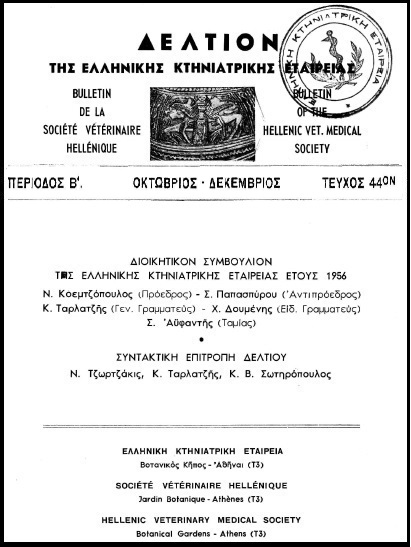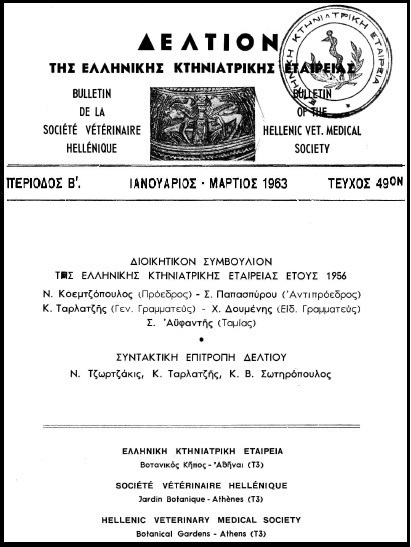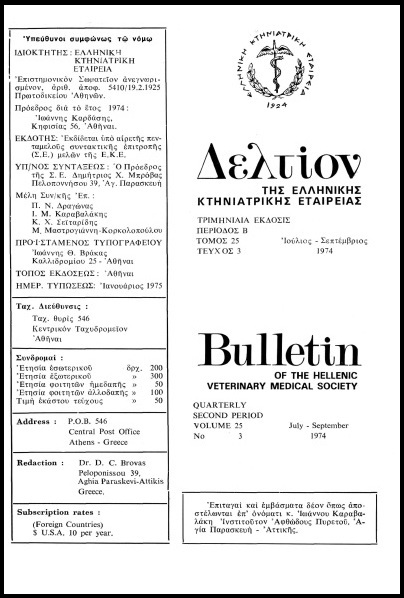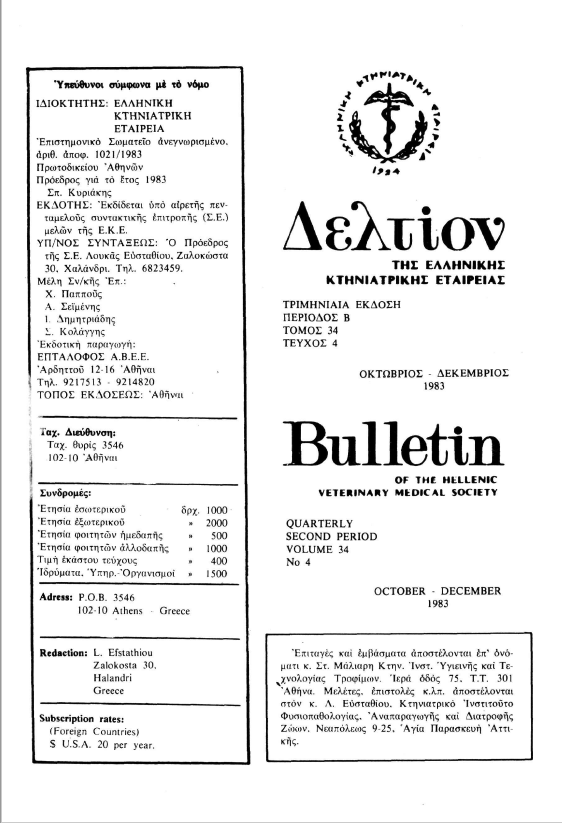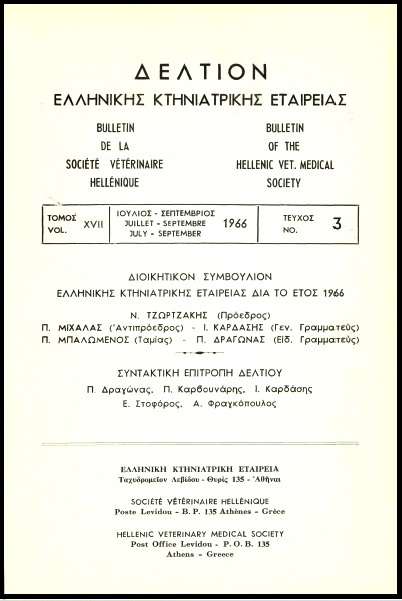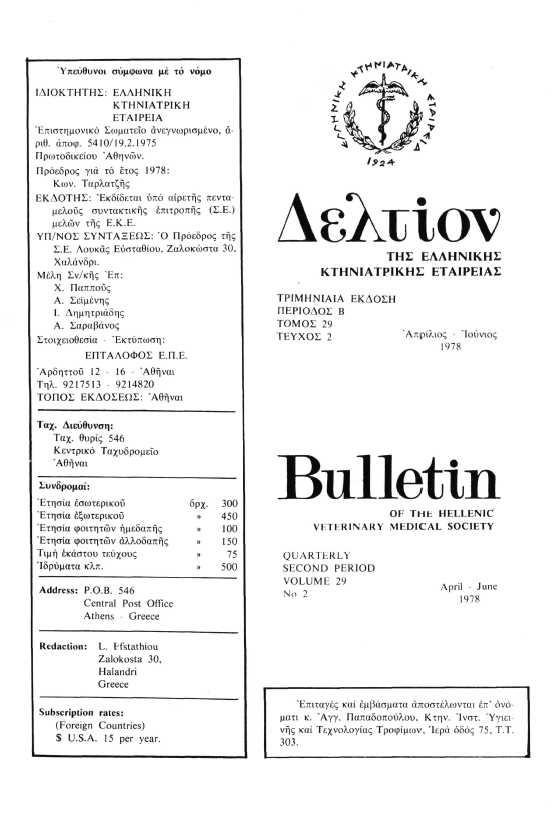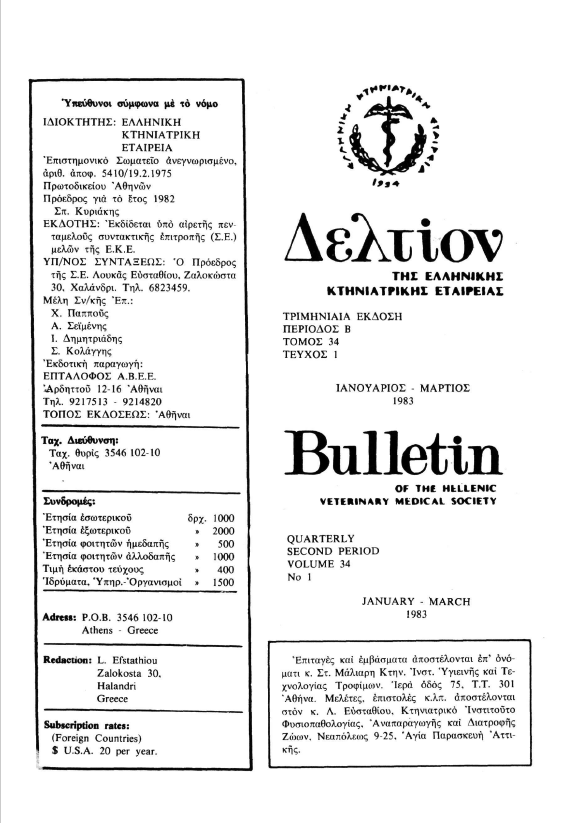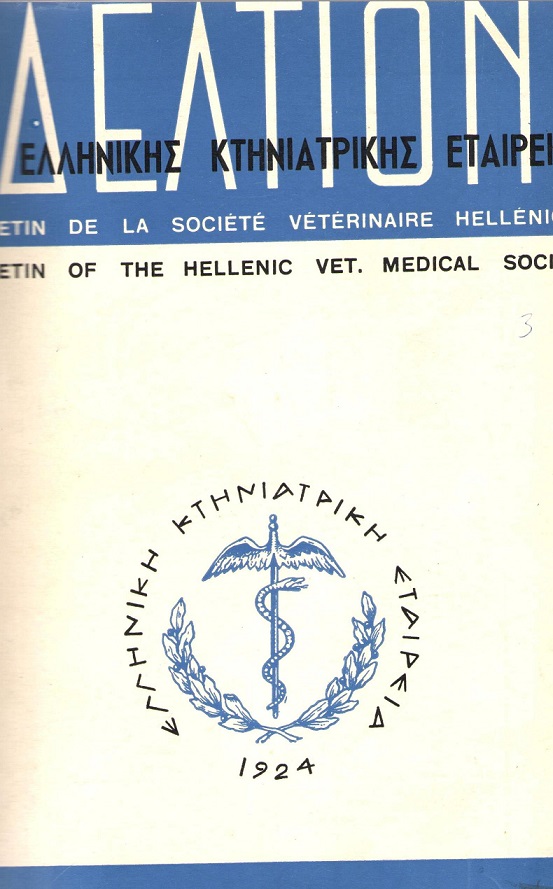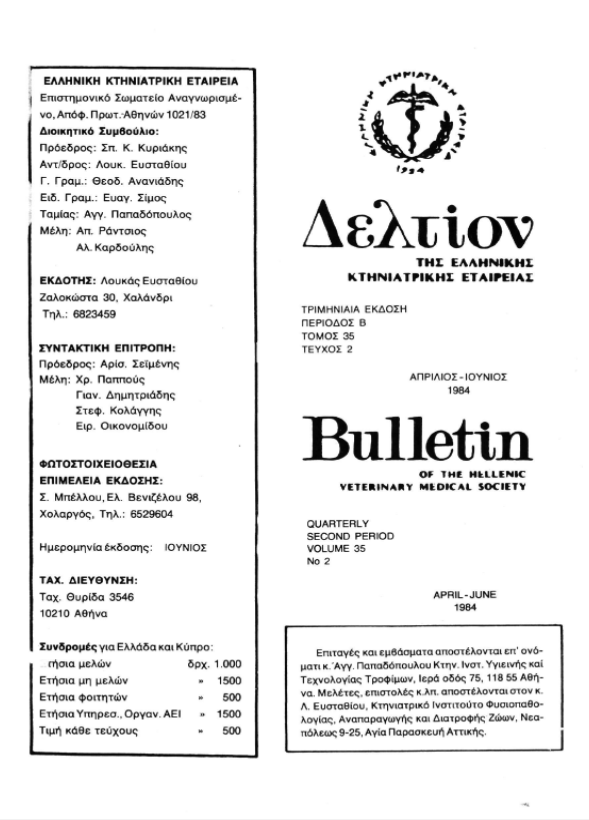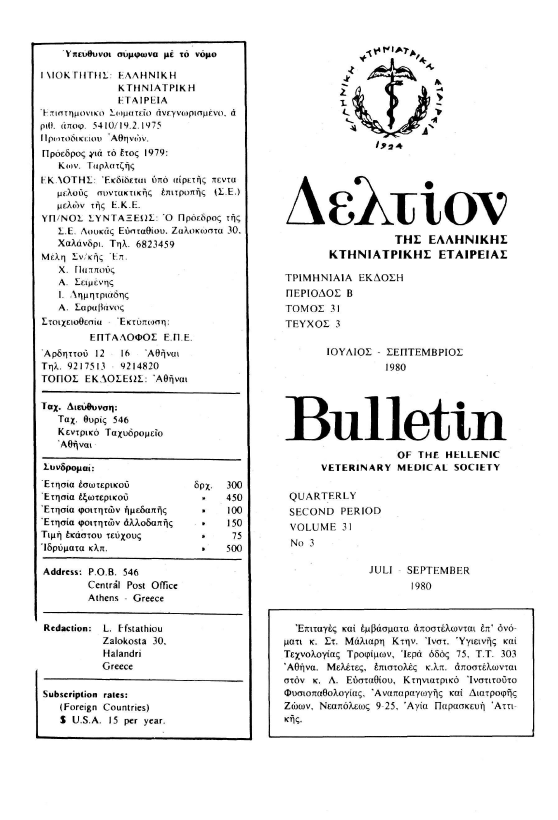Inhibition of gonadal function after chronic administration of D-Tryptophan 6, LHRH in bucks
Abstract
Plasma testosterone levels were determined in three bucks during the non-breeding season and at frequent intervals thereafter for 28 days. During this period of observation, one animal was injected daily with an LHRH superactive analoque (D TRYPTOPHAN 6, LHRH, 25pg. i.v.) whereas the other two served as controls. By the end of the 28 days period the control animals had shown a 2 fold increase in plasma testosterone whereas in the treated the plasma testosterone levels declined. The latter was associated with a decrease in the relcasable amount of LH while a prompt increase of plasma testosterone was noticed after the administration of HC G 5000 LU. Semen analysis performed 30 days after the discontinuation of the treatment with LHRH-A revealed a significant reduction in the sperm count and motility as contrasted to the control animals. These data indicate that chronic administration of LHRH-A inhibits the gonadal function of bucks and that this effected via a pituitary dependent mechanism. This findings may open new vistas in the study and control of sexual behaviour and fertility and have future applications in the programming of animal breeding.
Article Details
- How to Cite
-
ΚΟΥΤΣΙΛΙΕΡΗΣ Μ., ΜΕΝΕΓΑΤΟΣ Ι., ΞΥΛΟΥΡΗΣ Ε., ΠΙΤΟΥΛΗΣ Σ., ΧΑΔΙΩ Σ., ΣΤΟΦΟΡΟΣ Ε., & ΤΟΛΗΣ Γ. (2019). Inhibition of gonadal function after chronic administration of D-Tryptophan 6, LHRH in bucks. Journal of the Hellenic Veterinary Medical Society, 34(3), 217–224. https://doi.org/10.12681/jhvms.21598
- Issue
- Vol. 34 No. 3 (1983)
- Section
- Articles

This work is licensed under a Creative Commons Attribution-NonCommercial 4.0 International License.
Authors who publish with this journal agree to the following terms:
· Authors retain copyright and grant the journal right of first publication with the work simultaneously licensed under a Creative Commons Attribution Non-Commercial License that allows others to share the work with an acknowledgement of the work's authorship and initial publication in this journal.
· Authors are able to enter into separate, additional contractual arrangements for the non-exclusive distribution of the journal's published version of the work (e.g. post it to an institutional repository or publish it in a book), with an acknowledgement of its initial publication in this journal.
· Authors are permitted and encouraged to post their work online (preferably in institutional repositories or on their website) prior to and during the submission process, as it can lead to productive exchanges, as well as earlier and greater citation of published work.




